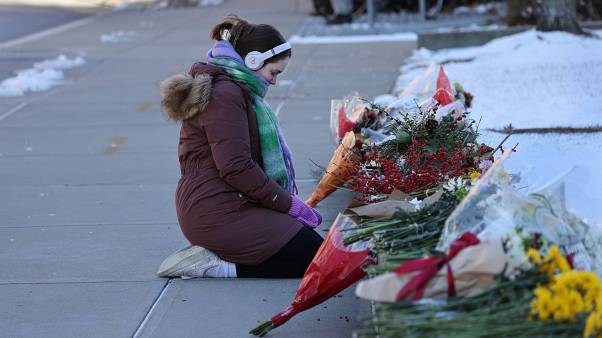Valleytown Baptist Church in Andrews, North Carolina, can handle an occasional request for financial assistance. They’re used to supplying food coupons, clothing for children, or medicine to the needy. This assistance is funded by the church’s monthly special offering. But pastor Ron McClure believes tougher times are ahead, as he gazes from the church’s front porch across the street toward another company suffering massive layoffs.
What is a pastor to do in a town where over one-third of the workforce has lost jobs due to the declining economy?
Until recently, compassion ministries usually reached out to homeless individuals who required only a hot meal and some bus tokens. Now benevolence has taken on a new look. Today’s needy are clean-shaven and often educated, but still in need of help.
Mass layoffs have increased in the past 18 months. The total layoff events for 2001, at 21,345, and the total number of initial claimants, at 2,496,784, were about 25 percent higher than the previous year (15,738 layoff announcements and and 1,835,592 claimants, according to the U.S. Department of Labor). And the trend is escalating in some sectors, such as information technologies.
Pastors are asking, “Just how much should the church help these people, if at all?”
So far seven families in Pastor McClure’s church have been affected. He believes the best action, for now, is to wait. “Right now they have severance packages, retirement, and unemployment. We as a church are willing to help, but we will have to look at them on an individual basis. I’m not sure where we’re going, but it does make you wonder how you’re going to pay the church mortgage next year, and how your people will make their house payments.”
Reality check
One church directly faced with that question is Menlo Park Presbyterian Church in California’s Silicon Valley, an area hit hard by layoffs in the technology industry. David Peterson, who serves as director of congregational care, explained the issue of supporting a family’s home mortgage was not a question of “should we?” but “can we?”
“Rent is $1,000 to $4,000 a month in this area. A mortgage payment is $2,500 to $8,000 a month,” Peterson said. “How do you address those kinds of financial burdens?” The church realized that benevolence may mean offering something more valuable than cash.
“The first program we developed in that ministry was targeted for people in crisis at the moment. Prayerworks is a weekly prayer meeting where we probe the Scripture to get encouragement and gain an understanding of who God is during this time of crisis,” said Katherine Leary, who runs Market Place Ministries, the church’s ministry that provides support services for those out of work.
Leary also offers a weekly business luncheon where networking is encouraged and professionals speak on career topics. The group boasts a strong Internet community that posts resumes and job opportunities.
Menlo Park still receives the traditional kinds of benevolence requests—more than 700 homeless people live in the area around the church—so Peterson and the staff have developed a hierarchy of need to evaluate the calls for help.
- Street people. “When the homeless come here, we make sure we get them connected to the local urban ministry. We usually give them a certain amount of coupons at the grocery store, maybe $15 worth, and we give them a couple of bus tokens.
- Occasional attenders. “Then there are the people lightly connected to us. They are not members, but attend a social function now and then, or are connected to a support group. We give them food coupons up to $100. We try to keep a cap of $500 per person. We might refer them to support groups, or financial counseling. Sometimes we will offer to pay for counseling.
- Members. “In the third category are long-standing members that are part of our congregation. They are well known. When they come, we make an exception to the rules in order to help them through that time. Often they are the ones who feel most self-conscious asking for help.” Confidential assistance, where possible, may reduce the embarrassment. The more difficult question is how much financial help can a church give its members. A $500 gift doesn’t go far toward the average middle-class mortgage. Now may be the time to ask the stewardship committee to explore the topic. What is the church’s limit? Will the church consider extending a loan to help a member keep the family home? And if so, under what criteria?
Peterson believes allowing the recipient to return some of their charity when they are able brings them a sense of relief, thereby restoring their dignity. “One lady was so delightful. She never referred to it as a gift, but as a loan. She has gotten involved in our singles ministry. One day she said, ‘I have work now, so I want to get on a plan to pay back this loan to you.’ I told her that it really was a gift, but if she wanted to pay it back to just give through the offering.”
Preserving the dignity of those who receive help can be quite tricky, as Cory Miller, pastor of Tabor Mennonite Church in Newton, Kansas, discovered. His congregation has partnered with two other churches to provide a food pantry as well as other benevolent ministries. He found that shame goes deep.
“We had our people go out to one family and patch their roof and chop wood for them,” Miller said. “At first, the woman came to church. Then she felt ashamed because of all the help we gave. Eventually, she felt so overwhelmed, that she didn’t want to fellowship here.”
Benevolence incorporated
More than 7 million people in the United States receive some type of government assistance. The traditional, low-income families and single-parent households qualify for many federal and state-funded programs; but the new needy—suddenly unemployed with high mortgages—most likely won’t meet government criteria.
And churches accustomed to the food-pantry-off-the-church-kitchen approach to benevolence may feel overwhelmed by the sudden need. One answer may be teaming with other churches in the community.
Love INC (Love in the Name of Christ) offers a sort of “plug-and-play” program. This support ministry, now partnering with World Vision, has for 25 years equipped more than 5,000 churches with effective management, mobilization, and networking tools.
The Love INC model brings several churches into partnership to support a central clearinghouse that verifies legitimate needs and matches the needy with service providers.
The clearinghouse maintains a database listing all the services that the members of the partner churches can provide. A physician, counselor, or storeowner, for example, might list their availability for services or products that they are willing to donate to the ministry. Love INC then contacts the parishioner and sets up the meeting.
Aid recipients are given an added opportunity to partner with a counselor who can help them plan long-term solutions. Those who participate can earn “green cards” by attending church support ministries or Bible studies and exchange the cards for products such as gas or groceries at the local food pantry.
Love INC president Robert Odom says this ministry lightens the load for pastors. “Some pastors think this is more work for them, but in fact it’s less. It becomes an extension of their ministry, while getting the congregation involved.”
Steve Larson found this to be true. His 89-member congregation, Fellowship Covenant Church in Hudsonville, Michigan, hosts the crib ministry.
“As a smaller church, there was no way we could help others benevolently, yet we carry the crib ministry. Love INC checks the reference for us then alerts us of the need. We then go out and deliver and set up a crib, many which have been purchased or donated by other churches, for a single mother. Additionally, we bring them information about our church as well as a pamphlet about who Christ is. We can say we are doing this in Jesus’ name.”
Larson is also delighted that his own members can benefit from the program. “When I’ve got some people in my church that are going through a difficult time, even though I don’t have all the resources, I can still say, ‘I want you to connect with Love INC.’ It’s a great help. It becomes a cycle of people moving in and out of ministry together, but the power comes back to the church; it’s not drained from the church.”
Information about Love INC can be found at www.LoveINC.org.
Lynne M. Thompson is a freelance writer in Modesto, California.
Copyright © 2002 by the author or Christianity Today/Leadership Journal. Click here for reprint information on Leadership Journal.








